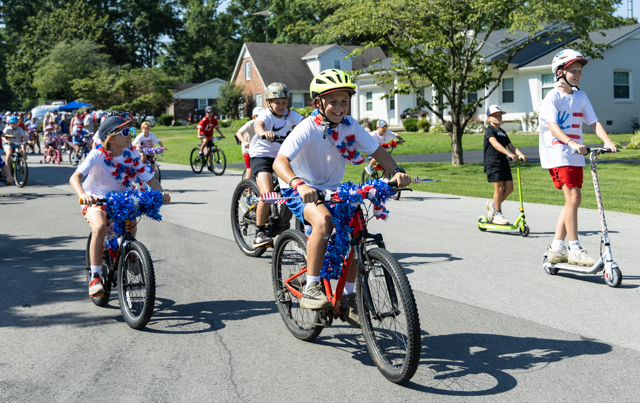Gatton student’s research gets to the bottom of diabetic foot ulcers
Published 8:00 am Wednesday, July 8, 2020

- Gloria Huang
It’s a mystery Gatton Academy student Gloria Huang hopes to unlock by blending science, math and computing and one that could hold treatment implications for a diabetes-related condition that about 15 percent of patients suffer from – foot ulcers.
“My project is aiming to find the most influential factors in the healing process,” said Huang, a rising senior at the academy who originally transferred from South Warren High School.
Huang’s research is in computational biology – a field that rests at the nexus of math, biology and computer science. Using mathematical models, its practitioners hope to unlock breakthroughs and better understand biological phenomena.
Huang’s work has also drawn recognition. She is the Gatton Academy’s first student to be involved with InspoScience Canada, a nonprofit aimed at offering young scientists opportunities to showcase their research at global science fairs. She is competing in the INSPO Research and Innovation Competition, a virtual science fair for the top 200 most-talented high school students in North America, with more than $2 million in available awards.
Spurred by curiosity, Huang developed her project after stumbling upon the work of Richard Schugart, an associate professor and graduate director in Western Kentucky University’s Mathematics Department.
“I was like ‘Wow, this is really cool because it combines biology, computer science and math.’ So I immediately contacted him,” Huang said, describing Schugart as a dedicated research mentor who checks in with her three times each week.
Any time she’s wanted to pursue a new project, Schugart has encouraged her to dive in, Huang said.
Through her work studying the convalescence of diabetic foot ulcers, Huang hopes to offer the health care providers who treat them with new insights.
“Chronic wounds like diabetic foot ulcers, they’re very unpredictable in their healing process, unlike regular acute wounds,” she said.
Understanding which healing factors are most efficacious could help frame treatment, she said.
According to the American Podiatric Medical Association, of those who develop a foot ulcer, 6 percent will be hospitalized due to infection or other ulcer-related complication. Diabetes is the leading cause of non-traumatic lower extremity amputations in the U.S., and roughly 14 to 24 percent of patients with diabetes who develop a foot ulcer will require amputation. Foot ulceration precedes 85 percent of diabetes-related amputations, according to the APMA, but research has shown that their development is preventable.
Huang’s work in this area hones in on four key factors to understand which is most influential in the ulcer-healing process.
Using a mathematical model and building off previous research, Huang examined matrix metalloproteinases (a kind of enzyme that helps break down proteins), their regulators called TIMPs, fibroblasts (which help produce collagen, the main structural protein found in skin) and the extracellular matrix, which helps support the cells it interacts with.
Ultimately, she learned that TIMPs were most influential in the healing process.
Although specific innovations in treatment will likely require more research, Huang said these kinds of discoveries could help shape the understanding of diabetic foot ulcers going forward and “streamline treatment for health care professionals.”
On a more personal level, Huang said her work on this project helped her understand how intertwined science, math and computing truly are. It’s also helped spark an interest in research more broadly. With research work, there are no ready-made answers, she said.
“You have to go find the answer,” she said. “You get to create the answer.”
– Follow education reporter Aaron Mudd on Twitter @BGDN_edbeat or visit bgdailynews.com.






